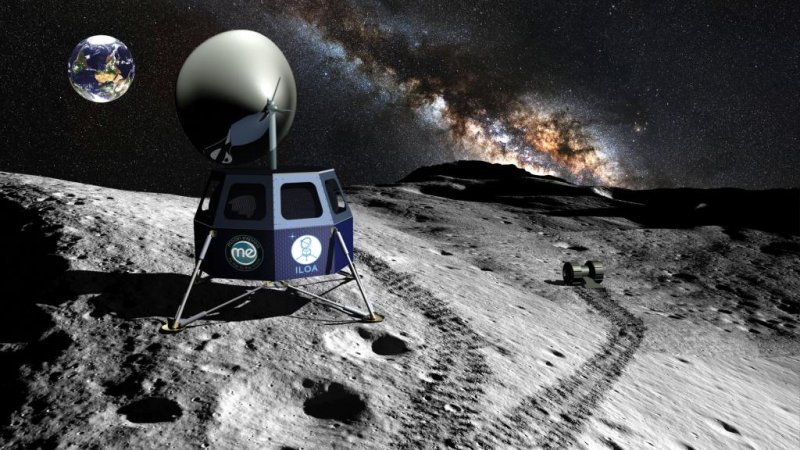Artist's concept of the proposed International Lunar Observatory on the moon's south pole. (Moon Express/International Lunar Observatory Association)
Two private companies are partnering to put a long-range radio telescope on the moon as early as 2016, and it will be accessible on the Internet.
The two companies are Moon Express, Inc. -- in the running for the $30 million Google Lunar Xprize to land a robot on the moon, and the International Lunar Observatory Association (ILOA) -- a nonprofit with a mission to establish a permanent lunar presence.
They plan to send a shoebox-sized optical telescope called ILO-X to the moon in 2015 as a test-case precursor to the ILO-1, with its 2-meter dish antenna, the following year.
Both telescopes will be accessible over the Internet, "providing scientific research, commercial broadcasting and enabling Galaxy 21st Century education and 'citizen science' on the Moon."
The telescopes, together called the International Lunar Observatory, will sit on the rim of a crater three miles above the lunar surface.
It will be the first-ever mission to the moon's south pole, but it will be commercial as well as educational. Moon Express also plans to do some prospecting for mineral and water deposits.
"The mission will provide an historic landing in an unexplored region of the Moon that may harbor some of the greatest resource deposits in the solar system," said Moon Express CEO Dr. Robert "Bob" Richards.
Moon Express, unveiled in 2010 as a commercial lunar resource company, is currently partnered with NASA for its lunar lander development, and hopes to one day become a "Space-Age version of FedEx."
The mission is projected to cost about $100 million, which ILO hopes will come from national space agencies and observatories.















